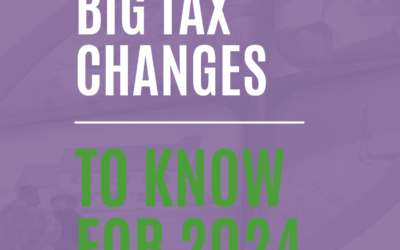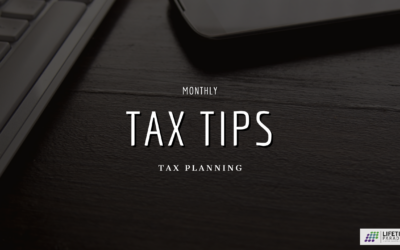The Financial Independence Now Podcast
Hosted by Randy Luebke
EP 0010. Roth Math
In this episode of The Financial Independence Now podcast we debunk several common myths and misinformation surrounding Roth conversions. We call this “Roth Math” and most people don’t understand it. Discover the essential considerations that you need to understand because they will significantly impact your decision to convert your traditional IRA’s, 401(k)s and other traditional retirement savings plans into a Roth. Trust us, you will be surprised with what you will learn from this podcast.
Episode Highlights:
- Explore the misconceptions surrounding Roth conversions from traditional retirement plans.
- Uncover the straightforward truth behind “Roth Math” that can guide your financial decisions.
- Learn about the origins of Roth accounts and why they didn’t gain as much traction initially.
- Deciphering the Roth Math Formula
- Strategies for Smart Conversions
Join us in deciphering the intricacies of Roth Math and gaining insight into making informed financial decisions that align with your goals and aspirations.
Links from the episode:
The 4×4 Financial Independence Plan ℠
Questions:
If you have any comments or questions about this episode, we would love to hear from you. Email us at [email protected] or connect with us on Facebook https://www.facebook.com/groups/financialindependencenowpodcast
Learn More:
https://lifetimeparadigm.com/education/financial-edification/
Support
We hope you enjoy listening to this episode and learn something that you can apply to your life starting now. If you’re finding value in this episode, please share it with a friend! Let your podcast streaming host, iTunes, or whichever streaming service you use, know that you appreciated the insights we shared. Don’t forget to give us a 5-Star rating, helping us connect with more like-minded individuals.
If you have any comments or questions about this episode, we would love to hear from you. Reach out to us via email at [email protected] or connect with us on Facebook at https://www.facebook.com/groups/financialindependencenowpodcast.
Also, remember to visit our website LifetimeParadigm.com. There, you’ll find links to our past podcast episodes, webinars, and educational articles. Stay updated on our upcoming events, both live and online. All the information is 100% free and available to you 24/7.
Lastly, make sure to subscribe to our newsletters, packed with fantastic ideas on saving and investing, reducing taxes, protecting yourself from lawsuits, and, of course, more insights on achieving Financial Independence, Now!

Transcript
When do you want to start living the life you dream of? A less stressful and a more fulfilling life? How about now? Welcome to the Financial Independence Now podcast. Financial Independence, when the assets you have provides the income you need, to live the life you want, and, work is no longer a requirement, it’s an option. Hi, my name is Randy Luebke, and I am the president and founder of Lifetime Paradigm, a financial consulting, planning and advisory firm, and, of course, the creator and host of this podcast, Financial Independence Now. I always begin my podcast by saying congratulations to you, our listeners, for making the decision to invest your time today. And we promise to make this investment into you every time you listen in.
In today’s episode, we’re going to talk about Roth Math. Over the years, I’ve heard so much misinformation about if you should or if you shouldn’t convert from a traditional retirement plan into a Roth plan. I’ve heard people on the radio talk about, well, you have to calculate the future value of money, or there must be so many years after you convert before you can break even on the conversion. And you must never use money from inside the retirement plan to pay the taxes when you make these conversions. And the truth of the matter is, this is all bunk. The simple truth, and I like to call it Roth Math, is a straightforward formula that we’re going to talk about in this webinar today. I think it’s interesting just to talk about for a moment.
When was the Roth created? I looked it up and it’s hard to believe, but it was actually created back in 1997 with the Taxpayer Relief Act back in 1997, and it went into effect in January 1998. So these Roth type retirement accounts have been with us for a long time, and I really thought that they were going to be a big deal when the law was passed. I thought that everybody would be jumping on this Roth conversion bandwagon, but I didn’t see it happening and I didn’t see it being promoted. And I asked myself, why?
And again, cynical me just believes that really it was about Wall Street greed. Because if you had somebody with say, a million dollars in a traditional 401(k), and they were going to pay all the taxes on it, all of a sudden that financial advisor might have 30% or 40% less money to manage and their income would go down. Now, that may or may not be the truth, but the reality was it just was never promoted. But it’s become more and more of a thing over recent years as people are becoming more and more concerned about taxes and retirement, and they see Roths as a potential way out, a potential way out of paying the taxes. The truth is, the Roth conversion is not for everyone.
Just like traditional retirement plans are not for everyone. But this is the way a traditional retirement plan works, or was basically formulated during your working years. While you were making money earning income, you were typically in a higher tax bracket. And so you’d make contributions into your retirement plan. Take the tax deduction.
The money, once inside the plan would grow tax deferred. And then when you retired and your income was lower, you’d withdraw that money at a lower tax rate. And the rule of thumb we used to make that calculation was your income would roughly be about 80% of what you were earning when you retired, and that would be enough to, again, to continue your lifestyle. And if you did the math on that, looked at the tax brackets, it worked out. In other words, it made sense.
Take the deduction now, let the money grow tax deferred, and then take it out when the taxes are lower during your retirement. But like most things with taxes, taxes are very complicated, right. It’s not just about the marginal tax rate, by the way. What’s a marginal tax rate? The marginal rate is the rate on the last dollar you earn.
So if you earn $400,000, your marginal tax rate might be at 40%, say, state and federal. And so every dollar after that would be taxed at that 40% rate until it went into the next bracket. Now, the reality is there’s many brackets that have to be calculated, many of these marginal tax brackets, and you work your way into them and different things are taxed at different rates. For example, in 2023, the first $160,200 you earn are subjects to FICA taxes. FICA taxes.
And those Social Security taxes? It’s a 15.3% tax, half paid by you and half paid by your employer. But it’s a bubble because once you get past that $160,200 of earnings, you no longer pay that 15.3%. You still pay a Medicare tax at 2.9%. But again, you can see already taxes are all over the place, right?
It’s not just the marginal income tax rate we have to consider. What about capital gains rate? They can run between 0%, yeah, 0% on long term capital gains if your income is low enough, to as high as 20%. Remember, during your retirement when you’re receiving Social Security, only 85% of it is currently taxed, which means 15% of it doesn’t get taxed at all.
And then we have these things I call tax bombs. These are little explosions in taxes, but they’re for maybe small periods. For example, if you have an income increase, it’s going to affect your Medicare insurance, your health insurance rates, because of something called an irma, which is an additional fee that you pay on top of your normal Medicare. If you have higher income, well, that irma only lasts for two years. Municipal bonds, they’re tax free at the federal and most of the time at state levels as well.
But again, when we’re calculating Social Security, we have to add that income back in that’s part of the modified adjusted gross income calculation for Social Security. Then we have tax credits that phase out or go away, or you’re allowed, but you can’t receive them if you make too much money. And then of course, deductions that also get phased out. So all of these different things, literally a cacophony of calculations, go into calculating your taxes. So you have to ask yourself, going back to where we started a few moments ago, will your taxes be higher during your retirement or will they lower be lower?
Right now the tax rates may be higher, but will your taxes be higher? And why is that important? Well, it’s important because of this “Roth Math”. And here you go. This is the simple truth.
If your taxes are going to be higher when you retire, then making conversions to Roths will make sense. And if your taxes are lower, you’d actually be better off keeping your money in a traditional account, not converting them to a Roth. And if the taxes are the same, it doesn’t matter. It’s not about how much time you have. It’s not about the source of where the money is going to come to pay the taxes.
It’s not about the future value of dollars. Nothing else matters. All that matters is if taxes are higher, you would have been better off with a Roth. If taxes are lower, you’d be better off with traditional. And if taxes don’t change at all, it doesn’t matter.
I’m going to give you a real simple example just to make my point. Let’s say that you had $100,000 in a traditional retirement account. And let’s say over a period of years that that money doubled. So the $100,000 became worth $200,000. Now let’s say when you take that money out, you have to pay the taxes.
And let’s say the tax rate is 25%. So 25% of $200,000 is $50,000, which means you’d have $150,000 to spend. And by the way, it doesn’t matter if I take that money out over ten years or 20 years or one year. My math is simple. I started with $100,000.
I let it double over time. I paid 25% tax on the money as it came out. I have $150,000 I can spend. Now let’s reverse that. Let’s take the $100,000 and pay the tax on it today, that same 25% tax rate, that means I’d have $75,000 that I could continue to grow.
We’re going to let it double, just like it did before, right? Same investments. It’s going to double. And now when I take it out, I don’t have to pay any taxes. But $75,000 times two is still $150,000.
So again, if the taxes you’re paying today and the money is being saved and the taxes you pay when you withdraw the money come out are exactly the same, it doesn’t matter. You have $150,000 either way. I’m going to reverse that. Take $100,000 and now let’s pay 20% tax. So I’d only have $80,000.
That would be growing, and I’m going to double it like before. So now I’d have $160,000 to spend. Now I take that same $100,000 and I wouldn’t pay the tax. I’d keep it in the traditional account. I’d let it double $200,000.
But now, let’s say instead of 20% tax, the taxes are higher, 25%. So if they’re 25%, 25% of 200,000 means I’d have $50,000 of tax. I’d only have $150,000 to spend. So again, if taxes are higher, Roth Mass says you would have been better off converting at the lower rate and paying the taxes, today.
Let’s reverse it again, $100,000 at 25%. Today I’d have $75,000 left. I’d let it double. I’d have $150,000. But now let’s say in the future that taxes go down, my taxes go down.
$100,000 times two grows to 100 or goes to $200,000. But now I only have to pay 20% taxes. 20% is $40,000, so I’d have $160,000 to spend. So again, if taxes are lower, I’m better off not making a Roth conversion and allowing that money to grow tax deferred in the traditional account. Again, if the rates are higher, tax rates are higher, Roth is better. Tax rates are lower, traditional is better.
And if it doesn’t change, it doesn’t matter. It’s the same. So what should you do? Well, there’s several ways to look at this and things to consider. First one is what I call bracket capturing.
Our taxes, again, are progressive and there’s many different tax rates. But this is 2023. The two tax rates that are most advantageous, I’ll put it this way, are the 22% and the 24% tax rate. Currently, if you’re married and filing jointly, you can earn up to $190,750 and you’ll pay a 22% marginal tax rate. And you can earn up to $364,200, that’s a lot of money, right, $364,200, and you only go up to 24%. So 22 or 24%.
Now, if you get over that $364, 200, it jumps all the way to 32%, right? So what that means is, let’s say you’re earning $200,000 a year and you’re a married couple.
Well, that means you have $164,200 that you could convert into or from a traditional account into a Roth account, capturing that bracket, capturing that 24% tax rate and not paying at the higher rate that potentially you might be at in the future. Now, will your taxes be lower than 24%? Could be, right, and it may not be the right idea, the right strategy, for you to do, but that’s the idea of “bracket capturing”. And for a lot of people, most people, especially if you’re under that 24% limit, it makes a lot of sense to at least make some conversions into the Roth bucket.
Another thing to consider, I call it the widow’s tax. You’re married and your spouse dies. Well, remember those brackets where you could have 22% to 190,750? Well, it gets cut in two it goes down to $95,375, and the 24% bracket gets cut off at $182,100. So after a spouse passes, your taxes effectively go up because the tax brackets are going to be reduced to allow you to do the bracket capturing, and so will your deductions.
They’ll be reduced as well. So that’s another reason to work through Roth conversions over the years. Again, making use of the bracket capturing to help the surviving spouse minimize their taxes. Also, as you go up in age, your RMDs are going to increase. And with a Roth, there are no RMDs.
RMDs are required minimum distributions. Required minimum distributions are money that you have to take out of your retirement account, even if you don’t need to spend it, but you have to take it out. And when you do, you have to pay the taxes on those withdrawals. And of course, you lose the ability for that money to continue to grow. Tax deferred money inside a Roth never has that problem.
There are no RMDs. And by the way, those RMDs continue the withdrawal and tax deferrals continue even after death for another ten years with Roths. And if your accounts are earning a 7.2% rate of return over a ten year period, it literally doubled the money that you’d be able to pass along to your heirs. So that can be another good reason to make a Roth conversion. So let’s summarize roth math.
It’s really simple, right? Taxes are up when you retire, then Roth makes sense. Taxes are down, traditional is a better idea. The taxes are the same. It doesn’t matter.
But the decisions to convert are very complex. And the question you should be asking yourself, of course, is what should you do? You, the individual, right? And what you should be doing is consulting a professional for a detailed analysis.
Not just somebody that’s going to calculate at the margin, the savings, or the cost. They need to do an analysis that shows all the different areas that’s going to affect all the phase outs of deductions, all the increases in margins or IRMA deductions. All those little tax bombs we talked about. So a detailed calculation, and by the way, this is not a one time calculation. This is the calculation that needs to be done year after year after year. Why?
Because your financial situation is going to change, your investments are going to change, and certainly tax laws are going to change. So that’s, number one. Consult a professional for a detailed analysis. Number two, implement the tax bracket capturing, right? Take advantage of capturing at lower rates and making a conversion of at least some of your traditional retirements into Roth retirement accounts.
You should also consider making conversions when your investments are lower, right? Investments that are still good investments potentially will recover, right, in the future. So why not convert them when their values (dollar values), lower, so that when those investments increase? Then again, the money, the earnings would all be tax free. To you, that can always, almost always make sense.
Another thing to point out is don’t wait till the end of the year to do a Roth conversion. A lot of people make this mistake. They wait to see how much they’re going to earn. They wait to see what their investments look like. You should be looking at this every quarter.
Right. And can you estimate approximately what you’re going to earn? And you can certainly look at what your investments are doing. And again, back to the previous point, if investments are down and you believe it’s just a temporary thing, what a great time to convert while your, (quote) “investments are on sale”.
Of course. Never. Well, I shouldn’t say never. There’s never a never. Right.
But in most cases, it doesn’t ever make sense to convert all of your traditional money into a Roth in one year. Right. You really want to meter it in. You want to do it when it makes the most sense, not just to get it over with, but to make sure that you’re again, applying Roth math. Because if you convert and you pay taxes at a higher rate, then it didn’t make any sense.
It’s just a waste of money. By the way, there’s a movement right now going on which is growing in popularity. It’s called power of zero. And its founder proponent, David McKnight. It’s a pretty simple idea. If you have no taxes, no taxable income during your retirement, it doesn’t matter what the government does to raise tax rate, because zero times whatever is still zero.
Right? And by the way, David McKnight was one of the first persons I’ve heard publicly that actually had the Roth math. Right. Most of these people, these pundits that we hear on the radio in these infomercials, they just had it wrong for years. But David was right on saying, yeah, taxes are higher, it makes sense.
If they’re lower, it doesn’t. If it doesn’t change, it doesn’t matter. Right. He was there. But what David does is he says, you know what, you should convert most of your money to Roths, but not necessarily all of it.
Why? Because you still get standard deductions and you want to take advantage of those standard deductions as you withdraw money from your retirement account. So by using a combination of, generally, life insurance, Roths conversions, and the taxable money, you can achieve this 0% tax bracket. And again, zero times zero, no matter what the government does to increase taxes, still means you pay zero.
So it’s a really interesting concept. It’s not simple, but it’s really a great strategy for you to go towards. And don’t forget real estate. Right. Real estate, again, provides many tax benefits that are not actual costs. Right.
Things like depreciation, accelerated cost recovery, things of that nature. Tax loss harvesting. If you do have losses in investments, you could potentially sell them, claim the loss, and then use that loss to convert part of your retirement plan to a Roth and then actually buy that investment back again if it’s a good one. So it could again make you money in the future, but tax loss harvesting…
And don’t forget about charitable giving, that’s another one. So, in summary, again, if you live a successful life, just remember, taxes are going to be your number one expense. Taxes are going to cost you more than your mortgage. It’s going to cost you more than your student loans. Taxes, if you’re successful, could cost you more than anything, unless you plan.
And that’s really the message here. As always. Talk to a professional. Do real planning and make the best choices. Make better, as we say, “better, smarter, safer choices” and financial decisions so you can begin the life that you dream of today.
So that’s it for today. We trust that you learned something from today’s podcast. Equally important, in fact, maybe even more important, we hope that you will do something with the information you have learned. Remember, life’s a journey and not a destination. Enjoy the trip along the way. Take a look at your life today from a new point of view, a new paradigm, a paradigm where you are living, the life you dream of starting, right now. We look forward to you joining us on our next episode of Financial Independence Now.
And in the meantime, please tell your podcast streaming host, iTunes or whomever you choose to listen to our podcast through. Tell them that you enjoyed what you heard and you valued the information we shared. Give us your five-star rating to help us grow our audience so we can connect with more people and helped them every day. Also, remember to visit our website, lifetime paradigm.com. There, you’ll find links to our past podcast episodes, webinars, and educational materials, all 100% free and available to you 24/7. You’ll also find notices of our upcoming events, both live and over the internet. And finally, be sure to subscribe to our newsletters, which are full of great information, ideas on how to save and invest, to reduce the taxes you pay, to protect you from lawsuits. And of course, even more ways to become financially independent. Well, that’s it for today. This is your house, Randy Luebke, signing off.
SERVICES WE OFFER RELATED TO THIS TOPIC
The information contained in this post is for general use and educational purposes only. However, we do offer specific services to our clients to help them implement the strategies mentioned above. For specific information and to determine if these services may be a good fit for you, please select any of the services listed below.
The 4x4 Financial Independence Plan ℠
Tax Planning
Coaching and Consulting
Your Co-Owned Business Probably Needs a Buy-Sell Agreement
Tax PlanningBradford Tax InstituteSay you’re a co-owner of an existing business. Or you might be buying an existing...
Big Tax Changes to Know for 2024
Financial Guides2024 has brought some big tax changes with it. It’s essential to stay informed about these...
The Smart Tax Planning Newsletter March 2024
Tax PlanningIn This Issue: IRAs for Young Adults Get Up to $32,220 in Sick and Family Leave Tax Credits New Crypto Tax...






